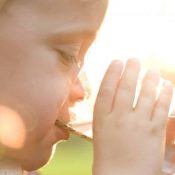
Our state is one of the leading contributors of nutrient pollution to the Mississippi River and the Gulf of Mexico. Researchers recently announced that this year the excess fertilizer from farm fields carried to the Gulf of Mexico helped in the development of a low-oxygen “dead zone” in the Gulf of Mexico that covered an area of 6,952 square miles – the 8th largest ever measured. Though the dead zone in the Gulf is devastating, we should also remember that the first waters that are impacted are in our own backyards.
Illinois waters receive nitrate and phosphorus from farm runoff and point sources like discharges from wastewater treatment plants. As they flow towards the Gulf, these nutrients first enter our rivers and lakes where they can cause harmful algal blooms which are toxic to pets, wildlife and people. Nitrate is also a drinking water contaminant on its own and costs hundreds of thousands to millions of dollars to remove with a treatment plant. In Illinois, hunters and anglers, paddlers and nature lovers, farmers, and those who rely on our rivers and lakes for drinking water all have a stake in reducing nutrient pollution for Illinois.
Below you can read more about the diverse organizations in Illinois that have incorporated the goals of the Illinois Nutrient Loss Reduction Strategy into their work.
Izaak Walton League of America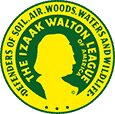
The Izaak Walton League of America was formed nearly 100 years ago, in northeast Illinois, by a group of anglers concerned about loss of fish habitat and poor water quality. That legacy carries the organization today as it continues to advocate for common sense conservation measures in order to preserve our resources for the next generation. This includes the protection of our lakes and rivers, soils, woodlands, habitat for all species, air quality, and ample opportunities for public land access and enjoyment. We believe in all forms of outdoor recreation activities as a way to enhance our quality of life, including hunting, fishing, hiking, boating including canoeing and kayaking, wildlife viewing, bird watching, etc. To that end, we are very concerned about the increased levels of nutrient pollution (nitrogen, phosphorous, soil loss, animal waste, etc.) that is negatively impacting Illinois’ waters and related resources, and our outdoor experiences. We believe that all Illinois citizens deserve such opportunities and therefore urge the state’s policy makers to enact the necessary conservation measures to protect those opportunities for all.
Mississippi River Network
The Mississippi River Network (MRN) whose mission is a healthy Mississippi River for the land, water, wildlife, and people, is focused on reducing nutrient pollution because of the many harmful impacts it has on water quality in the River and the Gulf of Mexico. Nutrient pollution does not only cause the hypoxic zone in the Ggulf, which harmfully impacts aquatic life and the fishing and shrimping industry, but it also affects drinking water locally and downstream, it negatively impacts human health and recreation on the River and its tributaries, and impacts economies. MRN works to reduce nutrient pollution through non-partisan education and engagement of local, state, and federal decision-makers and by educating and engaging our 20,000 River Citizens who are folks of voting age who have taken a pledge to be a guardian and caretaker of our great River.
Natural Land Institute
The Natural Land Institute’s mission is to protect natural lands for people, plants and animals. T, the effects of nutrient pollution on our land and water resources makes our work especially critical in a time of loss of environmental protections. Nutrient pollution not only destroys the functioning of natural terrestrial and aquatic systems and impacts wildlife, but it also causes human health problems due to polluting our drinking water as well as negatively affecting property values. The health and economic effects of this pollution is that we invest billions of dollars every year for clean up, remediation activities and health care rather than preventing those
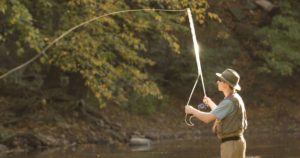
contaminants from affecting our quality of life up front. Our organization works to prevent and mitigate those damages by strategically protecting land and water resources not only for plants and animals, but for people, and advocating for those protections as we continually illustrate how inextricably linked we are with our natural environment.
Nutrient pollution negatively impacts our work because we need to constantly manage and restore the lands we have protected from outside pollution stressors. This is very expensive, strains capacity, yet needs to be done because of our responsibility to the resource, to our mission, and to keep our promise to our donors, funders, and our community.
Illinois Paddling Council
The Illinois Paddling council is dedicated to promoting the safe enjoyment of all disciplines of canoeing and kayaking in Illinois, to assure access to the state’s waters and to protect and preserve the natural resources within the state. One member says, “I have been paddling on the Des Plaines River for 50 years. The amount of seaweed in the river has increased tremendously. I have been told that it is caused by fertilizer runoff and some of the process used to treat water. It is as bad this year as it has ever been.”
Pheasants Forever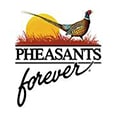
Pheasants Forever and Quail Forever focuses our efforts on creating quality habitat across Illinois. Wildlife habitat contributes to the NLRS by replacing low production areas on farms with perennial vegetation. These areas can reduce soil erosion, reduce inputs, and help improve water quality all while providing year-round cover for a myriad of wildlife species and helping farmers improve their bottom line. Through a whole-farm approach, there’s room for good production and good wildlife habitat on every farm. PF/QF is extremely supportive of measures to reduce nutrient loading into Illinois waters while improving land and production across the state.
Association of Illinois Soil and Water Conservation Districts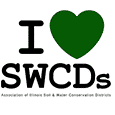
The Association of Illinois Soil and Water Conservation Districts (AISWCD), is a grass roots organization formed in 1948. It is made up and serves the member Soil and Water Conservation Districts (SWCDs) of Illinois. SWCDs work to protect Illinois’ greatest assets – the rich, fertile soils and water resources of the state through strategic conservation efforts. SWCDs, working in conjunction with agricultural as well as environmental stakeholders, have for decades over played a central role in efforts to protect and sustain the viability of Illinois’ natural resources for future generations. Today, conservation districts must continually adapt to new and emerging challenges. SWCDs provide valuable technical assistance on a variety of natural resource issues in both rural and urban settings which include; water quality, soil conservation, nutrient management, sustainable land use, and conservation education. The AISWCD supports the mantra “Clean water, healthy soils.”
National Wildlife Federation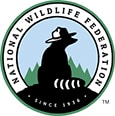
Much progress has been made in cleaning up rivers and streams since the Clean Water Act was passed, but agricultural and urban runoff continue to impair water quality in our rivers, lakes, and coastal waters to the detriment of both people and wildlife. National Wildlife Federation is working at the federal and regional levels to reduce nutrient pollution through advocating for: limits on nitrogen and phosphorus loads on waterbodies across the United States most at risk of toxic algae outbreaks, contaminated drinking water supplies, and ecological dead zones; Farm Bill incentives and provisions to help provide landowners with financial and technical assistance to expand the use of cover crops, riparian and wetland buffers, and manure and fertilizer management to reduce agricultural pollution of key rivers and streams; targeted state efforts to adopt strategies to reduce nitrogen and phosphorus pollution and strong numeric standards for limiting nitrogen and phosphorus pollution; water quality improvements to protect source water areas and watersheds for drinking water supplies; strong Clean Water Act safeguards for our nation’s wetlands and streams that help prevent excess fertilizer from entering larger streams and rivers; and much more.
Agricultural Watershed Institute
The Agricultural Watershed Institute (AWI) mission is to conduct research and educational programs on practices and policies that improve water quality, maintain or restore ecosystem health, and conserve and manage land and water resources in agricultural watersheds. Much of AWI’s on-farm R&D is conducted in that watershed including early work on denitrifying bioreactors and saturated buffers when those practices were still in the experimental stage. The City of Decatur has one of the largest public water supply systems that has installed ion exchange treatment in order to consistently meet the federal drinking water standard for nitrate of 10 mg/l as N.

AWI’s work on nutrient loss reduction includes significant focus on the potential role of perennial crops for co-production of agricultural goods (animal feed, bioenergy/bioproduct feedstock, perennial grain, and agroforestry products) plus ecosystem services (improved water quality and hydrology, soil health, wildlife/biodiversity, and climate mitigation/adaptation). Such multifunctional cropping systems can be, and in our view should be, an important component of enhancing the environmental, economic, and social performance of agricultural watersheds over the next 20+ years.
AWI and our university and NGO partners in the Green Lands Blue Waters consortium would like to encourage greater effort by USDA, the State of Illinois, and private industry to create policy incentives and commercial markets for perennial crops in order to achieve these environmental benefits for the people and ecosystems of Illinois.
Prairie Rivers Network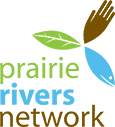
Prairie Rivers Network works to protect our water resources. Illinois is a land of rivers. We depend on them for our drinking water, recreation, transportation, and even food. More often than not these depend on the lands that surround them. We promote a vision of a regenerative agriculture system which contributes to resilient farms, soil health, and clean water.
We advance advocate for adequate funding for the conservation programs that help farmers incorporate conservation practices into their operation. We work with farmers directly, providing educational opportunities about regenerative farming systems, and share stories about their transition to a new way of farming.
We have also been tracking nitrate leaching into our drinking water. Every year 8-10 communities have their water go over the safe drinking water standard and have to invest in nitrate treatment. Each year we see other towns start reaching the nitrate limit. This is a problem that is growing. Our State’s Nutrient Loss Reduction Strategy needs greater financial support and a more direct plan for how we are going to reach a 45% reduction in phosphorus and nitrate by 2035. These goals are not just important for reducing dead zone in the Gulf of Mexico, but for protecting our own drinking water at home.
Illinois Environmental Council
IEC is devoted to working with our partners in the conservation and agriculture sectors to explore the best ways to reduce the amount of nutrient pollution in our surface waters and ultimately into the gulf. We have promoted the Nutrient Loss Reduction Strategy to Illinois legislators and held stakeholder meetings to identify the best ways to meet the goals outlined in the strategy. We take Illinois lawmakers to farms and conservation properties in their districts to show off conservation practices that are in use and educate lawmakers about the benefits of implementation. We also work with partners to incentivize regenerative agriculture practices and educate farmers about the benefits of soil health.







